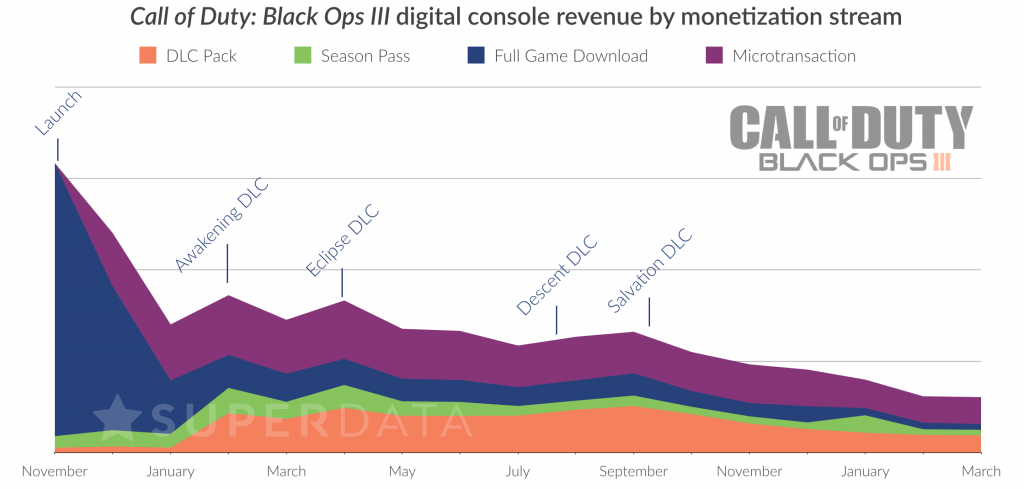How significant a role DLC and microtransactions play in the revenue of Call of Duty: Black Ops III and Battlefield 1 was told by the analytical company SuperData.
Today, on April 27, she published a post about the new features of her Arcade service, which now not only demonstrates digital sales, but also breaks them down by sources of monetization. In other words, its users see how much the developer earned on sales of the original copy, how much on micropayments, DLC and “Season pass”.
SuperData demonstrated the capabilities of the new toolkit using the example of the publication of data on Call of Duty: Black Ops III and Battlefield 1.
Call of Duty: Black Ops III was released in November 2015. By January, its sales had significantly dropped compared to the release, which is natural for a paid title. From that moment on, most of the money was brought to the game by in-game micropayments. In total, they accounted for 33% of the money earned by the game from November 2015 to March 2017. Earnings with DLC are in second place.
The situation with Battlefield 1 is less clear. The game was released relatively recently – in October 2016. But you can already notice a similar trend: after the fall in sales of a copy of the game, it begins to earn money on existing users again. Currently, the most profitable channel for Battlefield 1 is DLC, and the game still earns less with micropayments than with season tickets.
The Arcade service, according to the SuperData post, has also learned how to display retention, downloads and re-engaged users on mobile. Thanks to this, for example, SuperData learned that the retention of Hearthstone is 60% more than the same indicator of CSR Racing.
A source: SuperData


